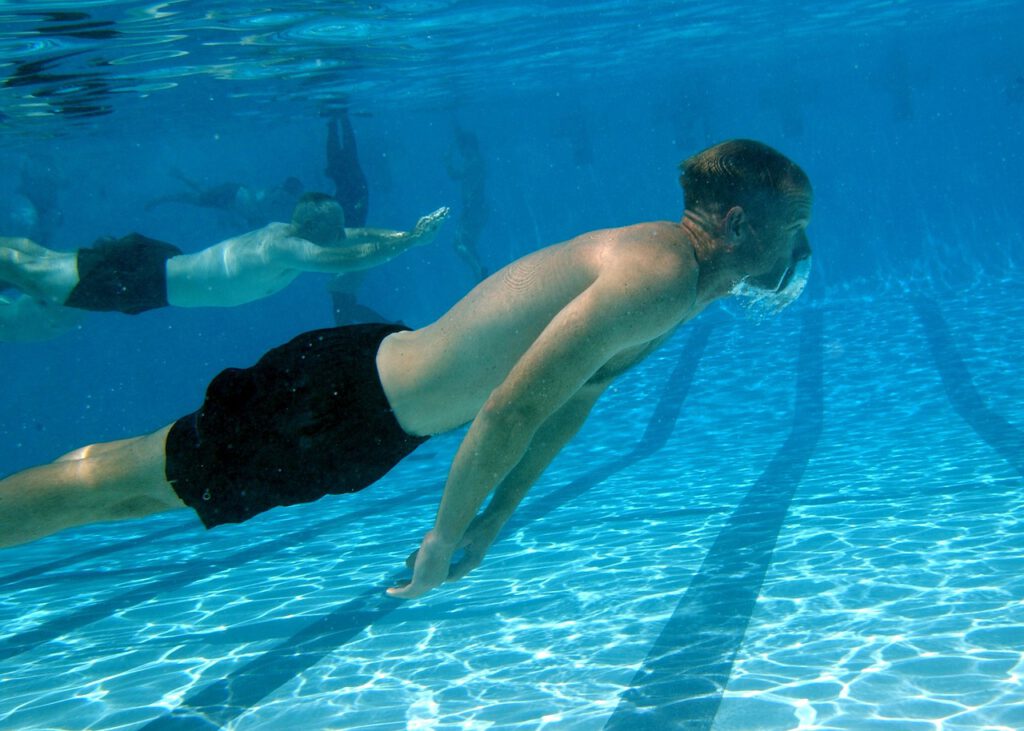
Young men, beware: there’s a strange new phenomenon that’s been threatening the masculinity of teenagers everywhere. It’s called “gynecomastia” and it’s becoming more and more common in boys aged 13-18. This condition causes teenage boys to develop female-like breasts and can be both embarrassing and damaging to their self-esteem. If you thought puberty was difficult enough already, this mysterious affliction is here to make it even worse!
Gynecomastia has become an increasingly common problem for teenage boys over the past decade, yet many of them are still unaware of what it is or how to address it. Doctors are also unsure as to why this issue seems to be growing so rapidly in adolescent males. Those who do suffer from gynecomastia may feel embarrassed or ashamed about their condition, which can lead to depression and anxiety in some cases.
It is important that teenagers understand the risks associated with gynecomastia so that they can take steps to prevent or treat this condition before it worsens. In this article, we will discuss what gynecomastia is, its potential causes, and ways to manage the condition if it arises in your teenager. Read on for more information on how you can help your teen tackle this difficult problem.
1. Definition Of Gynecomastia
It’s an interesting coincidence that the teenager in question is likely to be experiencing gynecomastia. Gynecomastia is a condition where the male has enlarged breast tissue, and it’s surprisingly common. It affects around two-thirds of teenage boys at some point during their adolescence.
So what exactly is gynecomastia? Well, it’s when the breast tissue grows abnormally due to hormonal imbalances between estrogen and testosterone. This can cause pain, tenderness, and embarrassment in males who experience it. In some cases, the enlargement can be so pronounced that surgery may be necessary to reduce its size.
In addition to hormones, there are other factors that can contribute to gynecomastia in teenagers such as drug use, certain medical conditions, or even obesity. With this in mind, it’s important to note that while gynecomastia can be embarrassing for many teens, it is not necessarily indicative of any serious underlying health issues.
2. Causes Of Gynecomastia In Teenagers
When it comes to the causes of gynecomastia in teenagers, there are a few potential explanations. It can be caused by a hormonal imbalance, as adolescents often go through major changes during puberty and hormones can become a bit out of whack. Excessive alcohol consumption or drug use can also cause gynecomastia in teenagers. Finally, some medications may also be responsible for the condition.
Gynecomastia is not always linked to an underlying medical condition; however, when it does appear due to an actual health issue, the most common causes are related to hormonal imbalances or problems with the endocrine system. Additionally, certain types of cancer can also cause gynecomastia in teens.
While there are various reasons why gynecomastia might occur in teenagers, these are some of the primary causes that should be considered if you suspect your teen has this condition. Now let’s take a look at what signs and symptoms may accompany gynecomastia in teenagers.
3. Signs And Symptoms Of Gynecomastia In Teenagers
Travelling down the teenage years, with its own set of changes and challenges, can be a difficult journey. It is even more so if one starts noticing physical changes in their bodies – like the development of breasts on boys, which is an unnerving experience. This condition is known as gynecomastia and this article will cover the signs and symptoms of gynecomastia in teenagers.
Gynecomastia in teens is characterized by the growth of breast tissue beneath the nipples, often appearing as small, firm bumps or lumps. Other symptoms include tenderness and enlargement in both breasts, areolas that get larger than usual, burning sensation around the nipples and pain around the chest area. These physical manifestations can be accompanied by psychological problems such as anxiety and depression due to body image issues.
It’s important for teenage boys to know that gynecomastia does not typically pose any physical risks and is generally harmless. However, it can cause some discomfort and embarrassment for affected individuals which affects their self-esteem. With proper diagnosis from a doctor or pediatrician, teens suffering from gynecomastia can find relief with treatment options available to them. Moving on from here, let us discuss about diagnosis of gynecomastia in teenagers…
4. Diagnosis Of Gynecomastia In Teenagers
Troubling and potentially embarrassing, gynecomastia in teenagers is a common issue that requires proper diagnosis and treatment. To determine the best course of action, it’s essential to understand how doctors identify this condition. Like a jigsaw puzzle, diagnosis of gynecomastia in teenagers comes together piece by piece.
The process begins with a thorough physical exam. During this time, a doctor will check for any lumps or swelling under the nipples, as well as any changes to the shape of the chest wall. They’ll also ask questions about any medications being taken or other health-related issues that may be contributing to gynecomastia. In some cases, imaging tests such as an ultrasound or MRI may be ordered to get a better look at what’s happening inside the body.
Finally, blood tests are often used to measure hormone levels and rule out other causes for enlarged breasts such as tumors. Once all of these components have been assessed and evaluated, doctors can accurately diagnose gynecomastia in teenagers and work with them to create an effective treatment plan tailored to their individual needs.
With knowledge comes power, and understanding the diagnosis process for gynecomastia in teenagers helps provide information needed for optimal treatment decisions. Onward then, onto exploring those treatment options…
5. Treatment Options For Gynecomastia In Teenagers
It’s a scary thought for parents – their teenage son is developing enlarged breasts. Could this be gynecomastia? Whatever the cause, treatment options exist. But what are the best treatment options for teenagers facing this condition?
The answer to that question involves careful consideration of the teen’s age, lifestyle and overall health. Depending on the individual situation, one or more of the following treatments may be recommended: medications, lifestyle modifications, or surgery.
Medications can help reduce gynecomastia in some cases, particularly if it’s caused by an imbalance in hormone levels. Lifestyle changes such as healthy eating and regular exercise may also be beneficial in treating the condition naturally. And if those two options don’t work well enough, surgery remains an option. Surgery typically yields results that last longer than other methods but carries its own risks and complications.
Before embarking on any course of treatment for gynecomastia in teenagers, it’s important to discuss all available options with a doctor or specialist to ensure that Teen gets the best care possible. With knowledge and understanding of these treatments comes a greater chance of successful outcomes and improved quality of life for Teen.
6. Complications Of Gynecomastia In Teenagers
The complications of gynecomastia in teenagers are absolutely devastating! Not only do they suffer from physical discomfort and embarrassment, but they can also experience psychological distress. The impact this condition can have on their lives is absolutely heartbreaking.
Short-term complications include pain and tenderness in the chest area, as well as swelling and inflammation. In some cases, lumps may appear under the nipples and be visible through clothing. This can lead to further humiliation, self-consciousness, and even depression.
Long-term effects may include increased risk for certain types of cancer, such as testicular cancer. Additionally, there could be a decrease in libido due to decreased testosterone levels caused by gynecomastia. It’s clear that these potential health risks should not be overlooked or ignored – they could have significant effects on the overall well-being of a teenager dealing with gynecomastia.
So it’s essential to understand how this condition can affect young people both physically and psychologically – before taking steps towards prevention.
7. Prevention Of Gynecomastia In Teenagers
Preventative measures for gynecomastia in teenagers are often overlooked, but they can make all the difference. Like a protective shield, these steps can buffer against the development of the condition. Let’s take a look at how we can arm our teens with the best defense they have against this condition.
To start, diet can have a huge impact on hormone levels and thus gynecomastia risk. Cutting down on fatty and sugary foods while increasing fruits and vegetables is key to keeping hormones in balance – it’s like hitting reset on their bodies. Encouraging physical activity is also important, as it helps keep weight gain at bay and encourages healthy hormone production.
Finally, helping your teen manage stress is another powerful tool for prevention. Stress causes our bodies to produce more cortisol which can interfere with hormones, so it’s essential that teens find ways to relax. Whether through yoga or mindfulness practices, teaching them how to de-stress will reduce their risk of developing gynecomastia significantly.
With these steps implemented, we’re giving teenagers the best chance possible to avoid complications from this condition and live happy lives free from its effects. Onward then we go – let’s explore how gynecomastia impacts teenage psyche!
8. Psychological Effects Of Gynecomastia In Teenagers
It’s important to consider the psychological effects of gynecomastia in teenagers. While it’s not typically a serious medical condition, it can have a significant emotional impact on a young person. This is particularly true when gynecomastia is severe or when the teenager is self-conscious about his appearance.
Teenagers with gynecomastia may feel embarrassed, anxious, or depressed. They may be reluctant to participate in physical activities or sports they once enjoyed, resulting in decreased confidence and self-esteem. It may also lead to further psychological issues such as low motivation and hopelessness.
These emotional challenges can become even more difficult if the teenager is teased or bullied because of their condition. It’s important that teens struggling with gynecomastia receive support from friends, family members, and healthcare professionals who can help them cope with their feelings and work through any mental health issues that may arise.
The social impact of gynecomastia in teenagers is an important factor to consider when discussing this condition.
9. Social Impact Of Gynecomastia In Teenagers
The social impact of gynecomastia in teenagers can be devastating. It can take a toll on their sense of self-worth, making them feel isolated, embarrassed, and ashamed. This can lead to poor self-esteem and social anxiety, which can interfere with their ability to form close relationships and participate in activities they enjoy.
When it comes to how peers may respond to gynecomastia in teenagers, it is important to remember that some adolescents may not be as understanding or accepting of the condition as others. Teens with gynecomastia may find themselves the target of ridicule, teasing, bullying, and exclusion by their peers. This type of behavior creates an emotional burden that exacerbates the distress caused by the physical appearance of the condition.
The psychological effects of gynecomastia in teenagers are further complicated by the lack of awareness about it among both medical professionals and non-medical personnel alike. As a result, many teens with gynecomastia go unnoticed and unsupported for extended periods of time. Fortunately, treatments for this condition exist and have been found to be very effective when properly administered. With appropriate support from family members and medical professionals, teenagers with gynecomastia can learn coping strategies that will help them manage their symptoms both mentally and physically.
10. Coping Strategies For Teenagers With Gynecomastia
Coping strategies for teenagers with gynecomastia can be compared to a jigsaw puzzle. All the pieces are scattered around, waiting to be put together in order to create a bigger picture. It is important for these adolescents to understand the various options available that can help them cope with their condition.
One way of coping with gynecomastia is through physical activities. Exercise releases endorphins which can improve overall mental health and reduce feelings of depression or anxiety. Furthermore, as gynecomastia is often caused by hormonal imbalances, regular physical activity can also help restore normal hormone levels. Additionally, it may help reduce excess fat or tissue in the chest area.
Engaging in psychotherapies such as cognitive behavioral therapy (CBT) or talk therapy has also been found to be effective in helping teenagers develop healthy coping mechanisms and manage their condition better. Such therapies can assist teens in understanding and changing their thoughts, emotions, and behaviors concerning the condition so they are better equipped to deal with its challenges. Additionally, support groups are another great tool for adolescents as they offer an opportunity for them to connect with others who share similar experiences and gain valuable insight on how best to manage their condition.
No two cases of gynecomastia are alike and similarly, there isn’t a one-size-fits-all approach when it comes to addressing its impact on adolescents’ lives. Whatever form of coping one chooses, it is essential that teenagers understand that they are not alone and that there are various resources available that can help them better manage their condition in the long run.
Frequently Asked Questions
Is Gynecomastia In Teenagers Common?
Gynecomastia, or the abnormal enlargement of breast tissue in males, can occur at any age. It is particularly common in teenagers and can be quite concerning for those affected. So, is gynecomastia in teenagers common?
The answer to this question is yes. According to the American Society of Plastic Surgeons, approximately 50-60 percent of teenage boys experience some degree of gynecomastia during puberty. The condition often resolves over time without any treatment, however it may persist into adulthood if not managed properly.
Fortunately, there are several treatments available to help reduce the size of enlarged breasts in adolescent males. These include medications, lifestyle modifications, and surgery when necessary. It’s important that teenagers receive proper care and advice from healthcare professionals to ensure their gynecomastia does not become a long-term issue.
In summary, gynecomastia in adolescents is relatively common, but with the right medical support it can be effectively managed and treated.
Are There Any Natural Remedies That Can Be Used To Treat Gynecomastia In Teenagers?
Gynecomastia in teenagers is an incredibly common concern that can be caused by a variety of factors. It can lead to a great deal of distress and embarrassment for those affected, so it’s no surprise that many are searching for natural remedies to treat the condition.
Unbelievably, there are actually some natural remedies that may be beneficial in treating gynecomastia. Exercise and dieting are two of the most widely recommended methods. Regular physical activity and a balanced diet can reduce fat levels in the body, allowing any excess tissue associated with gynecomastia to shrink naturally. Additionally, increasing fiber intake has been shown to reduce symptoms in some patients. Herbal supplements such as saw palmetto and nettle root may also help by reducing estrogen levels in the body.
It is important to note, however, that these remedies will not work for everyone and should always be used alongside medical advice from a healthcare professional. Consulting with your doctor about which treatments are appropriate for you is essential before trying any type of natural remedy for gynecomastia. So if you or someone you know is suffering from this condition, don’t hesitate to seek advice from a qualified healthcare provider today!
How Long Does It Take To See Results From Treatment Of Gynecomastia In Teenagers?
When it comes to treating gynecomastia in teenagers, one of the most common questions is: How long does it take to see results? To answer this, it’s important to understand the different types of treatments available and how they work.
The most commonly used treatments for gynecomastia are medications, surgery, and lifestyle changes. Medications may include hormone therapy or anti-estrogen drugs that help reduce the size of breast tissue. Surgery may be necessary in extreme cases and involves removing excess tissue from the chest area. Finally, lifestyle changes such as dieting and exercising regularly can also help reduce the size of enlarged breasts.
Each type of treatment has its own timeline for when results can be expected. With medication, results may start to show after a few weeks or months depending on how well the drug is tolerated by the patient. Surgery is typically more effective than medications but requires much longer recovery time before any visible results can be seen. Lastly, lifestyle changes can take longer to show results since weight loss and muscle building both require dedication and consistency over time.
No matter what treatment plan is chosen, it’s important to remember that progress will not happen overnight; with patience and persistence though, noticeable improvements in chest size can be achieved over time.
Are There Any Lifestyle Changes That Can Be Made To Reduce The Risk Of Gynecomastia In Teenagers?
Treating gynecomastia in teenagers is like sailing a boat through turbulent waters – there are various risks and the journey can be unpredictable. One of the key ways to avoid any issues is by taking preventive measures, such as lifestyle changes.
In order to reduce the risk of experiencing gynecomastia during adolescence, there are several lifestyle changes that can be implemented. These include avoiding certain drugs, such as anabolic steroids and marijuana; eating a balanced diet with plenty of fresh fruits and vegetables; exercising regularly; and limiting alcohol intake. Additionally, if a teenager is overweight or obese, it is important to take steps to reach and maintain a healthy weight.
Making small but consistent lifestyle adjustments can have an immense impact on reducing the chances of developing gynecomastia in teenagers. For example, setting aside time for physical activity each day, choosing healthier snacks instead of processed foods, and reducing stress levels through activities like yoga or meditation can all contribute to achieving a healthier balance overall. TIP: Have conversations with your teenager about healthy lifestyle choices in order to help them make informed decisions that will benefit their health in the long run.
What Should Teenage Boys Do If They Are Concerned About Gynecomastia?
When a teenage boy looks in the mirror, he may see something that is more than just skin deep. Gynecomastia – an abnormal enlargement of male breast tissue – can be worrying for any teenage boy. It’s an issue that needs to be addressed and treated by medical professionals, but there are also lifestyle changes that a young man can make to reduce the risk of developing the condition.
Gynecomastia can be seen as a symbol of insecurity, a reminder of what cannot be changed about oneself – but it does not have to define who you are. With prudent attention to one’s lifestyle choices, it is possible to reduce the likelihood of developing this condition.
So, what should teenage boys do if they are concerned about gynecomastia? Here are three things they can do:
• Exercise regularly: Exercise helps burn fat and keep your hormones balanced.
• Avoid certain drugs: Recreational drugs can lead to hormone imbalances which may cause gynecomastia.
• Eat healthily: Eating unhealthy foods such as processed foods or fatty foods can contribute to hormone imbalance and obesity which can increase the risk of developing gynecomastia.
It’s important for teenage boys to take preventive measures against gynecomastia so they don’t needlessly worry about their body image and self-esteem. By making healthy lifestyle choices, teenage boys can ensure that their physical health is taken care of. Taking proactive steps now will help them stay healthier in the long run.
Conclusion
Gynecomastia in teenagers is a common issue that can be addressed with treatment. Although it may take some time to see results, natural remedies and lifestyle changes are available to help reduce the risk of developing gynecomastia.
It is important for teenage boys to be aware of their bodies and seek medical advice if they are concerned about gynecomastia. While this might seem like an awkward or embarrassing topic, talking to a doctor or healthcare professional can provide reassurance and help boys understand what they need to do to take care of themselves.
Despite being a difficult issue to discuss, gynecomastia in teenagers is something that should not be ignored. Boys need to be informed about this condition and its potential treatments so they can make the best decisions for their health and wellbeing. Irony teaches us that even if we don’t have all the answers, we can make progress on understanding our bodies and taking action when necessary.



